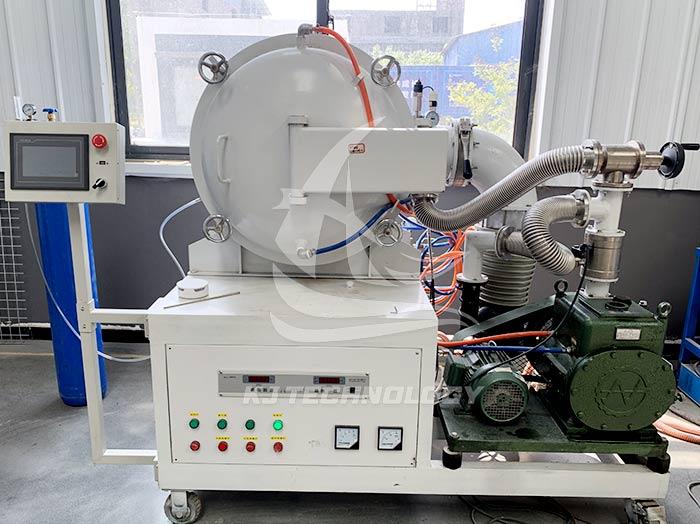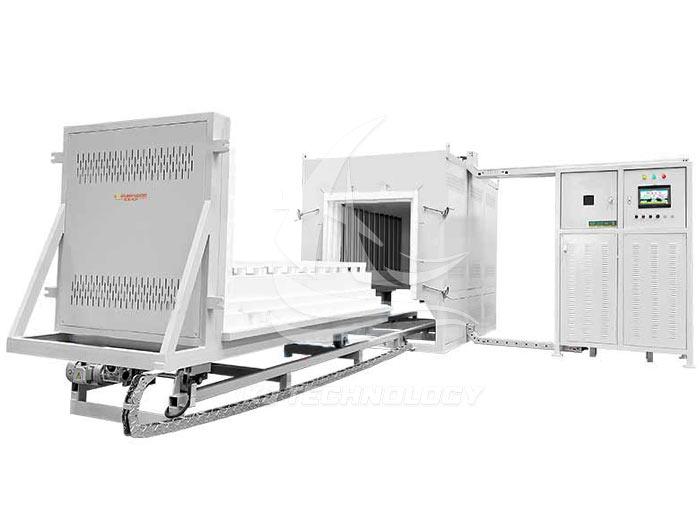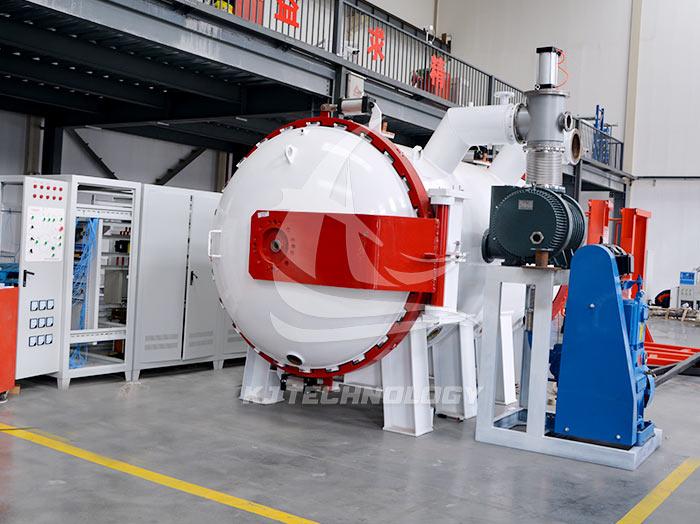High vacuum heat treatment brazing electric furnace brazing non-metallic
 10-15-2025 Author: KJ technology
10-15-2025 Author: KJ technology
High vacuum heat treatment brazing electric furnace brazing of non-metallic materials requires selecting the process based on material characteristics. Non metals such as ceramics can be connected through special brazing materials, but the vacuum degree, temperature uniformity, and avoidance of thermal stress need to be controlled. Typical applications include ceramic metal sealing, electronic device packaging, and optical component connection. The specific analysis is as follows:
1. The effect of high vacuum environment on non-metallic brazing
inhibit oxidation
High vacuum (usually ≤ 10 ⁻ ² Pa) can effectively remove gases and volatile impurities adsorbed on non-metallic surfaces, avoiding the formation of oxide films during brazing. For example, ceramic materials are prone to forming an oxide layer when heated in air, which hinders the wetting of solder, while a vacuum environment can significantly improve this problem.
Promote the elimination of volatile compounds
Non metallic materials (such as certain polymer composite materials) may release volatile components (such as plasticizers and moisture) at high temperatures, and a vacuum environment can accelerate their volatilization, reducing pores and defects.
Improve the flowability of brazing materials
The vacuum environment reduces gas resistance, making it easier for brazing materials (such as silver based and copper based active brazing materials) to spread on non-metallic surfaces, forming dense joints.
2. Key process parameters for non-metallic brazing
Vacuum degree control
Ceramic brazing: High vacuum (≤ 10 ⁻ ³ Pa) is required to remove the surface adsorbed water film and prevent residual gases such as hydrogen from causing pores.
Composite materials: Adjust the vacuum degree according to the volatilization characteristics of the matrix to avoid excessive pumping and material decomposition.
temperature uniformity
Non metallic materials have low thermal conductivity and are prone to local overheating. Partition temperature control technology should be adopted to ensure that the temperature difference inside the furnace is ≤ ± 5 ℃.
Typical case: During ceramic metal brazing, uneven temperature may cause ceramic cracking.
holding time
The reaction rate between non-metallic materials and brazing materials is slow, and the insulation time needs to be extended (such as 10-30 minutes) to promote element diffusion.
For example, the brazing of alumina ceramics with nickel based brazing materials requires insulation for more than 20 minutes.
3. Typical application scenarios of non-metallic brazing
Ceramic metal seal
Applications: Electronic packaging, aerospace sensors.
Process: Using Ag Cu Ti active brazing material, aluminum oxide ceramic and Kovar alloy are brazed at 850 ℃ under a vacuum of 10 ⁻ Pa to form an airtight joint.
Electronic device packaging
Application: High frequency devices, power modules.
Process: Au Sn brazing material is used to vacuum solder aluminum nitride ceramic substrate and copper leads, reducing oxidation impurities and improving conductivity.
Optical component connection
Applications: laser, infrared window.
Process: Vacuum brazing quartz glass and metal flanges using low melting point indium based brazing materials to avoid optical transmission losses.
4. Operation precautions
Material Pretreatment
Non metallic surfaces need to be cleaned (such as ultrasonic cleaning, plasma treatment) to remove organic matter and particle contamination.
Ceramics require pre oxidation treatment (such as 500 ℃ air oxidation) to generate an active surface layer.
Fixture Design
Use graphite or ceramic fixtures to avoid metal fixtures reacting with non-metallic materials at high temperatures.
The fixture needs to reserve an expansion gap to prevent deformation of the workpiece caused by thermal stress.
Cooling rate control
The difference in thermal expansion coefficient between non-metallic and metallic materials is significant, and segmented cooling is required (such as filling nitrogen gas to 0.1 MPa first, and then cooling with the furnace).
Typical case: After ceramic stainless steel brazing, rapid cooling may cause ceramic cracking.
5. Equipment selection suggestions
vacuum system
Equipped with a combination of diffusion pump and Roots pump, the ultimate vacuum degree can reach 10 ⁻⁴ Pa, meeting the requirements of high-purity brazing.
heating system
Use molybdenum strip or graphite heater with a maximum temperature of ≥ 1200 ℃. The heating element and insulation screen adopt anti deposition structure to reduce magnesium and other volatile pollutants pollution.
control system
Equipped with PLC+touch screen, supporting multi-stage temperature rise curve programming, real-time monitoring of vacuum degree, temperature, and pressure.








